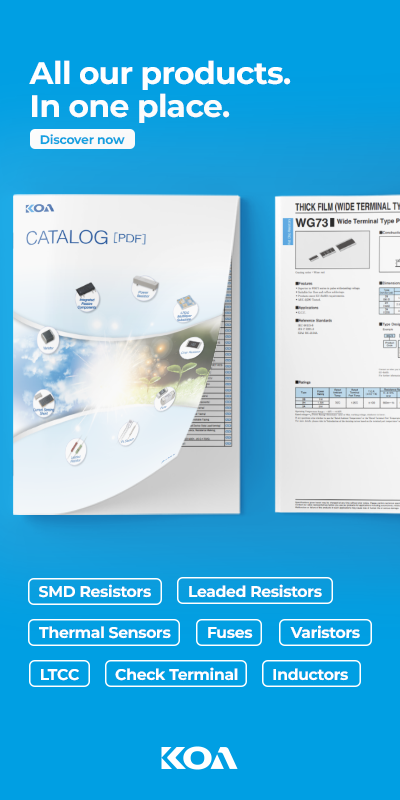
Understanding the Power of Logistics and Supply Chain Management
The semiconductor supply chain isn't unpredictable, it's just always in motion. While the cycles of supply and demand feel jarring at times, there are ways to increase stability and mitigate risks threatening to stop production lines. To move as the semiconductor supply chain moves, the key is to build a strategy incorporating both logistics and supply chain management (SCM).
Logistics vs. Supply Chain Management: What's the Difference?
While logistics and SCM are often mentioned interchangeably, logistics represents physical movement, while SCM emphasizes the coordination of the movement. To unlock effective supply chain strategies, you must first identify the strengths of each of these processes independently.
Logistics in the electronic components industry primarily focuses on transportation, warehousing, inventory management, and order fulfillment for semiconductors and hardware. Essentially, logistics ensures electronic components are delivered in the right quantity to the right place at the right time– all while being compliant with industry best practices.
In today’s interconnected global marketplace, where anyone can buy from anywhere, a logistics expert is crucial to vetting the entire sourcing process to affirm it is streamlined and cost-effective. This exemplifies the power of a global network and reliable market intelligence to enforce the efficiency of movement in logistics. Logistics experts also play an integral role in SCM.
Supply chain management aims to optimize the entire supply chain, from raw material acquisition to production, to the delivery of finished products. Supply chain management involves tactical sourcing, procurement, production and distribution. The major value-add of this coordination is in global reach, product lifecycle management, compliance with industry protocols, and trusted expertise.
Together, logistics and SCM allow for the maintenance of efficient order processing and delivery of parts from manufacturers to end customers. Recognizing how these segments cooperate enables you to develop resilient supply chain strategies and adeptly respond to changes in supply and demand.
Leveraging Trends in Supply and Demand Cycles
Anticipating shifts in the cycles of supply and demand can give companies in the electronics industry a competitive edge. Fortunately, trends in logistics and SCM can lay the groundwork for what you can expect to see in the coming months. Whether it’s lead time adjustments or changes to production capacity, these developments can serve as valuable indicators for anticipating fluctuations.
1. Data and Analytics: With abundant data available today, you can leverage advanced analytics tools to turn raw data into actionable insights. You can identify patterns and estimate where demand is developing by analyzing decommitment notices, inventory levels, and historical lead times across contract manufacturers and original equipment manufacturers.
2. Market Intelligence: Manufacturers are a valuable source of truth for the state of the market. When end-of-life (EOL) notices are issued or last-time-buy (LTB) dates are fast approaching, that is the signal to take stock of inventories and ensure stable supply to support production timelines until an alternative or replacement part can be identified or designed.
To go a step further, effective and systematic alignment across engineering and supply chain teams allows for BOMs (bill of materials) to be far more robust in the face of component manufacturer obsolescence. The increasing pace of technology and the constraints in the component market over the last 8-10 quarters have driven up the rate of EOL notices. The tiered selection of the right components on the AVL must be derived from factors reviewed by both engineering and supply chain managers. Compatibility and availability need to go hand in hand.
3. Visibility and Collaboration Across the Supply Chain: Maintaining a broad, global lens on how companies alter their supply chain management and consequently impact logistics is vital to creating your strategies. Manufacturers’ quarterly earnings calls are an essential resource for identifying which market segments are underperforming, what changes were recorded quarter over quarter, and how those changes are influencing decisions for the upcoming quarter.
When working with your strategic partners, ask questions and work together to plan for success.
Be Proactive, Not Reactive
Knowledge is power in the electronic component supply chain, and understanding the difference between logistics and supply chain management is a primary step in building a strategy to reduce risk and keep lines running. Taking that knowledge one step further and using it to read the market helps you stay in front of the curve, and the competition, allowing you to proactively plan for the cycles of supply and demand.
This predictive capability can empower businesses to optimize operations, reduce costs, and gain a competitive advantage in the fast-paced electronics industry.
About Fusion Worldwide
Fusion Worldwide is the preeminent global independent distributor of electronic components and products. We source, inspect, test, and deliver a broad range of components to a large and diversified customer base that includes OEMs, CEMs, and ODMs across a wide array of verticals.
Contact us today for a free valuation and cost comparison against your current program and start saving.


